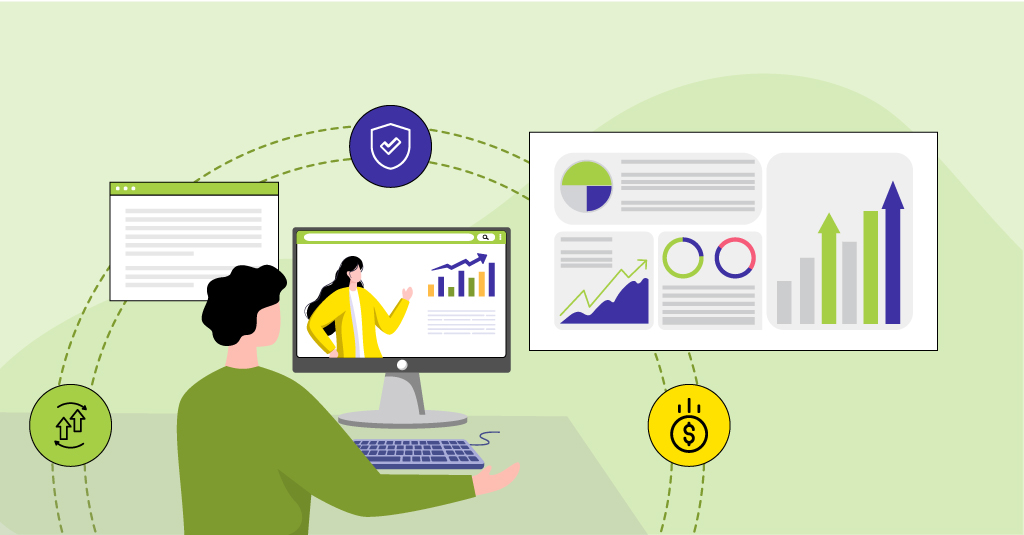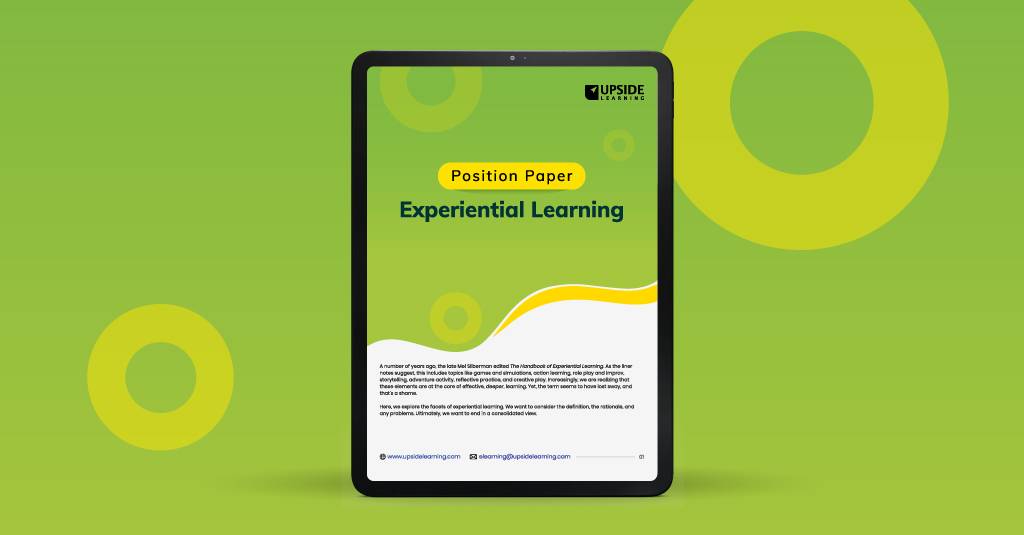In his webinar titled ‘Learning isn’t what you thought it was’, Jay Cross made a strong case for informal learning. He reiterated its advantages and told us why we should be considering it seriously.
While there doesn’t seem to be any doubt about its popularity in the learning domain, the webinar set me thinking about the possible pros and cons of informal learning.
How we learn
To begin with, Jay talked about learning by doing, through experience, experimentation and trial and error, and through collaboration—this is the natural learning process that all humans follow.
What I understand from this is that informal learning mirrors this process in two ways. Firstly, it’s learning through sharing and collaboration. Secondly, the learner selects how and when s/he learns. So it’s an imitation of the way we naturally learn, but with the use of social media and other tools.
What’s the big deal about informal learning?
But what’s giving informal learning this sudden push? Is this something completely new? Or were we unaware of its advantages before?
| I can see three reasons behind this popularity: | |||||||
| 1. | Firstly, the new social media that is available. Everyone is quite literally singing (should I say tweeting?) about these tools. Those in eLearning are seriously pushing for it as a replacement for traditional learning tools. But then we had social media options like threaded discussions, chats and forums earlier—so why the fuss?
(At this point, I would like to observe that there was a tweet chat running simultaneously during the webinar. You can hate me for saying this, but the proportion of learning coming through the chat seemed far less compared to the actual conversation. It seems to me it would have distracted from rather than focused attention on the conversation.) |
||||||
| 2. | The second reason behind its popularity: greater recognition of the value of informal learning stemming from our personal experience. If we look back, at every stage of our lives, we’ll find we’ve learned more from hands-on exploration, peer guidance, and interaction than from the most in-depth curriculum. | ||||||
| 3. | Thirdly, we’re now realizing more than ever that an active quest for knowledge motivates learners more than passive reception of information. As the webinar said, “Uncertainty engages the mind”. The need to fill the gaps in our existing knowledge is an inherent human trait. | ||||||
So if these are the pros, then what are the cons?
Does informal learning always work?
One point that doesn’t seem to be too hotly debated is – would informal learning work where learning is time-bound?
Informal learning, by its definition, means that the learner will “pull” the information s/he needs as and when required. But this means there will be no predictability about by when someone will have a particular skill or knowledge. This would be especially true if the learner doesn’t have any prior context or frame of reference. And what if it’s critical for the job that the learner should at least be exposed to certain basic information within a particular time frame?
Let’s take an example from my own domain. I work as an instructional designer. My organization has induction programs for new joiners who have no prior ID experience. This program introduces them to the basics of ID— theories, the processes that we follow, basically all the “how tos” about the stuff that we do. We also have regular training that looks at our weak spots and hones the skills that we already have. So these are all formal learning methods. However, if we had left it to the individual to learn about, say, how to write a storyboard, till the time they were actually beginning a project, the project would be at risk.
Make no mistake, we also have endless peer discussions about how we could do something better, or about what’s new in eLearning. We keep going to the Internet to research, to confirm, or to add to what we already know. And what we learn from these discussions is invaluable. But we’re building on what we’ve already got from our formal training and the application of that training. We’re adding value to what we already know – this isn’t the source of our basic training.
Build a scaffolding of learning
I think informal learning would be more effective if training programs built a ‘scaffolding’ of learning, with informal learning at the very top. This would also counter the disadvantage of a flexible time-frame.
At the base would be a traditional learning program. You’d begin by learning about the basics of the skill/job, in a program structured according to objectives and administered in regular doses till the required effect is gained. This would then be measured through conventional assessments (although Jay Cross believes that learning cannot be measured through tests, but through the application of the skills learned – the behavior).
Then… once you are familiar with the basics, we roll out the informal part. We put in place a ‘cloud’ of information, give you the tools and access, and let you start exploring. [Note – a cloud here would NOT mean ‘unstructured’ or ‘randomized’. It has to be structured – a categorized, tagged, ordered knowledge base– if it’s important that the learner gets relevant information. Else, the learner’s going to get swamped.] Here, you’ll get the more detailed, grassroots level “how tos”, the tips and tricks and the war stories, and be able to add your own experiences as well.
The advantage of this structure: you’ll know what to look for, because you already have prior experience. You’ll have created your own learning objectives for the informal learning process. You’ll now be augmenting your knowledge instead of building it from scratch. This is the scaffolding. This is adaptive learning that makes the best of both worlds. And at this level, you’ll also be evaluated by your peers and superiors on how well you apply the skills you’ve learned.
What technology do we use?
Another question that comes to my mind is about the technological aspect of informal learning. When an organization delivers formal learning, it makes sure that its trainees have the required technological setup—whether it’s a pair of headphones or sufficient bandwidth or a video conference setup.
With informal learning, what should we assume to be the average level of technology that’s available to the learner? Here’s another example from my own experience (see, informal learning does work):
A recent buzzword doing the rounds is “QR reader”. A very impressive piece of technology. I’m all for exploring it…except that I don’t have a camera phone. Call me outdated, but I prefer to keep my camera and my phone separate. It’s just one of those things. But what do I do if information I need to access in the future is in a QR code? Does this mean that I’ll have to purchase a camera phone just for this?
As of now, there doesn’t seem to be an answer, as it’s hard to predict how, when, and to what level a technology will penetrate.
| So what’s the verdict? Here are some other views that I’ve come across about informal learning. |
|||||||||
| a. | Saul Carliner, in his article in the eLearn magazine, talks about the following:
|
||||||||
| b. | Kevin Jones gives a list of 15 objections to social learning that he’s come across. (He also has the antidote for each of these objections.) | ||||||||
To conclude…
Informal learning seems to be a step in the right direction, breaking deeply-rooted stereotypical notions of what learning should be, and recognizing what learning actually is. But in the end, whatever the means of training, in a time-bound workplace training scenario, there has to be structure and guidance (albeit in varying degrees) for the learner.



















4 Replies to “When should you use Informal Learning?”
[…] Web 3.0 Presentation – The Way Forward? (Source: Upside Learning) […]
[…] Web 3.0 Presentation – The Way Forward? (Source: Upside Learning) […]
[…] “Web 3.0 Presentation – The Way Forward?” (presentation) […]
[…] “Web 3.0 Presentation – The Way Forward?” (presentation) […]